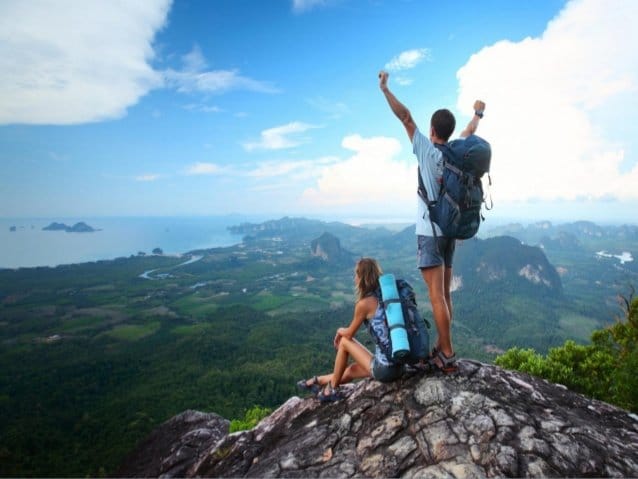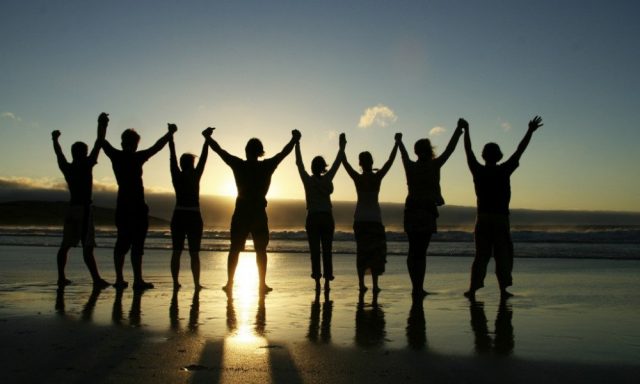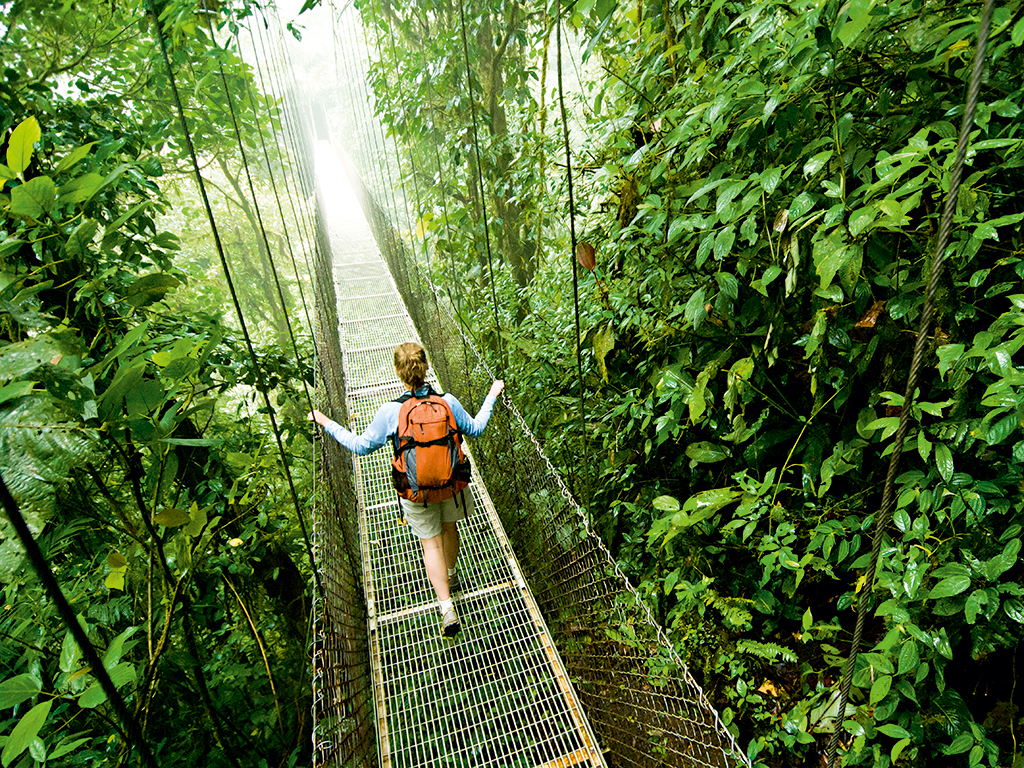6 Reasons Why Adventure Tourism is Gaining Popularity
Why Kids Need Wilderness And Adventure More Than Ever
These days, our kids’ lives are overscheduled, filled with pressure, and can be pretty intense. School, homework, sports and/or other extracurricular activities fill the week and often consumes many weekends as well. We all can feel like there is no time left to fit anything else in. There has to be. Our younger kids and teenagers need wilderness and adventure in their lives and who better to model it to them than us, their parents. I would actually argue that it is more important than a lot of the scheduled activities we have them in now. Wilderness and adventure will help develop them into well-rounded young adults.
1. Kids need the freedom to learn what life is like without a schedule.
There are so many books out there right now about the next generation and the lives they are living with the pressures that surround them and the belief that they cannot fail. Let them fail in some areas of their lives. The outdoors is a perfect place to learn to try new things. It takes a lot of work to get strong at wilderness activities, but there really is no failure – you just try again. I have found that getting my high school son out to climb, hike, and backpack has been the only thing that has provided him with some balance and perspective. Now that he is climbing regularly and hiking a lot on weekends too, he is starting to view school through a more realistic lens. It definitely helps with our kids that we started them out young and they have grown up living a lot of their lives outdoors. However, it is never too late. Take your kids out so they can actually just sit and watch a sunset instead of seeing it out the car window on the way to a game or academic event.
2. Kids of all ages need a connection to nature.
There is no substitute to exploring the natural world around us. While not all children have easy access to nature, there are many programs in cities that serve to get children involved with nature. If you are a parent who has access to wilderness around you, engage your children in it. This can range from something as simple as going on your first beginner hike (look them up right here on the Outbound Collective – there are most likely some right in your area) to cross-country skiing, backpacking, or photographing nature.
3. Kids need time to kick back and relax.
Provide them with boredom. Make them figure out how to entertain themselves when they are in a wilderness setting. One of my sons used to spend half a day building rock structures at the campsite or river. My older son kicks back in his hammock and just rests after hiking while staring up at the sky. That’s it. Nothing exciting, but so good for them.
4. Kids need to figure out how to exist without technology.
Seriously, I cannot even begin to list all of the things that suck up our kids’ time when they are at home. If you have younger kids, it is often ipads, video games or TV. With older kids there is the computer they need for their schoolwork and research, texting, social media and on and on. Take them to places where there is no cell service at all. I am totally serious. If they have phones, they will learn to take photos of their adventures and the beauty around them since nothing else will work on those devices they cannot let go of. They will probably gain a real appreciation for nature. Show them that not only can they survive without technology, but they can thrive and love the time away.
5. Kids must be taught the importance of conservation.
In my opinion, the next generation isn’t going to have the option of not conserving our resources. Teach them how to do it now and model it constantly for them. We have a huge role to play here. Take them out where there are national forest and park rules about feeding animals, litter, packing in and packing it out, etc. Help them learn how important the natural world is.
We want to acknowledge and thank the past, present, and future generations of all Native Nations and Indigenous Peoples whose ancestral lands we travel, explore, and play on. Always practice Leave No Trace ethics on your adventures and follow local regulations. Please explore responsibly!
Do you love the outdoors?
Yep, us too. That’s why we send you the best local adventures, stories, and expert advice, right to your inbox.
6 Reasons Why Adventure Tourism is Gaining Popularity
Whether it is a cycle ride along rural back roads, a trek into the mountains, a climbing expedition to a majestic peak or a mountain bike challenge over rugged mountains, adventure tourism benefits your mental, physical and emotional state and liberates the soul.
Embarking on an adventure is the best way to experience the world first hand. It is not called ‘soul food’ without reason. It comes as little surprise that adventure tourism is gaining popularity and following are some reasons why:
1. Stress reduces when the time is spent outdoors
Have you seen the faces of those who have just come back from an adventure trip? It is almost sure that a big wide smile would greet you back. When you are going to spend your days surrounded by stunning scenery, any stress that you may have had in your system will definitely melt away.
In fact, studies suggest that even going for an expedition or backpacking trip is not necessary and that even a walk in nature every day will lower your stress levels and boost your level of attention.
Nature experiences even when had for a short duration can decrease the pattern of thinking which is associated with the onset of certain mental illnesses.
So, for those who are experiencing the strain of living in the city, immersing themselves in nature is the best way to reduce your stress.

2. It makes exercise easier
If you are struggling to find the motivation to get into shape this bit of information should give you a lot of relief. The colour green is believed to have a soothing effect on our eyes.
The fact that grass, trees and other plants in nature are green in colour supports the theory that nature makes it easier for us to exercise. You can also verify this bit yourself, if you exercise in nature you will feel lower levels of exertion and you will also display fewer mood disturbances.
3. It regenerates and rejuvenates your soul
A good reason to spend time cycling and trekking is that it can rejuvenate and regenerate your mental state. Viewing natural beauty is known to elicit feelings of awe and triggers a mental boost as it releases endorphins.
Psychologists believe that we feel good when we look at things that we know are good for us, even if we are not aware of it. Trees offer protection, shade and the moment we look at them we associate them food, comfort and protection.
4. You get a sense of accomplishment
Regardless of size and age, it is possible to have a feeling of personal achievement if you take on an overseas adventure. The greater the challenge and more difficult the trek, the more sense of achievement you will feel at the completion of the goal.
If you make adventure travel a personal goal you will have a euphoric feeling and it is likely to stay with you even after you have returned home.

5. It raises your self awareness
Raising your self-awareness is a bi-product of travel. Adventure travel brings us closer to our inner self and gives us the chance to examine and challenge ourselves. The fact that we are about to step into the unknown and take risks makes us realise that we need to put in greater attention.
As a result, we develop an intense state of self-awareness. Mountain climbers need great levels of self-awareness when they are climbing mountains and this is the reason why they participate in adventure activities.
6. It makes us smarter
You can increase your higher order cognition by immersing yourself in the outdoors. If you were to take a brain scan after exercising you are likely to experience more focused and greater activity in the prefrontal cortex than before.
Moreover, there is an increased level of activity in the hippocampus which is considered to be the brain’s main storage unit. What contributes to the smartness is that adventure travel makes us learn new skills as it creates new challenges for us.
Another reason why adventure travel is gaining popularity is that you get to learn more about stag do venues and you become the go-to person when people need suggestions for places to travel to.
What are your thoughts on Adventure Toursim? Feel free to leave a comment below and let us know.
Watch this space for regular updates in the Opinion category on Running Wolf’s Rant.
Adventure tourism grows in popularity

Comments
Destinations such as Cuba, Colombia, Burma, Mexico, Brazil and Jordan have become more popular with tourists as adventure travel rises 
Climbing Mount Kilimanjaro, base-jumping off a cliff or trekking through the Sahara might not be at the top of everyone’s to-do list. But adventure travel – once limited primarily to gap year-takers travelling to Outer Mongolia in order to find themselves – is fast becoming mainstream.
This means that sun, sea and sand – the three ingredients that once promised families everything they’d ever asked for – are gradually being outpaced by hikes, wildlife treks, biking expeditions and cultural tours; the key trends seen in 2014, according to the Global Report on Adventure Tourism, published by the Adventure Travel Trade Association (ATTA).
What was once the utterly unknown – a mystery to be pierced only by the most intrepid of travellers – is now accessible at the click of a button
The sector – defined by ATTA as involving a combination of physical activity, a connection with nature and cultural immersion – is growing faster than ever before. It expanded at a rate of 65 percent year-on-year between 2009 and 2013, reaching an estimated worth of $263bn in the US and Europe alone, the report found. According to ATTA president Shannon Stowell, 80 percent of tourism boards now consider adventure travel a standalone sector – compared to just 40 percent eight years ago.
While the most under-developed areas are still limited to ‘hardcore adventurers’, destinations such as Cuba, Colombia, Burma, Mexico, Brazil and Jordan – which are partially developed but not overly commercialised – are becoming increasingly popular. This rising segment and the subsequent change in target destination could pose a direct threat to more traditional, static beach holidays – a sector that’s been largely dominating the industry for several decades.
Hungry for experience
The growth of the experiential travel sector is being driven by a number of factors – not least, according to Stowell, a general consumer shift away from a desire for material possessions and towards an interest in actual experiences. “There have been numerous consumer studies that show people are more and more leaning towards experiences versus stuff, and I think that’s definitely driven more people towards travel”, he says.
An even bigger driver seems to be the fact that adventure travel is now considered safer and more affordable than it was just a few years ago. That’s something that Alistair Butchers, Innovations Manager at tour operator G Adventures, agrees with. “The world has become a lot less scary”, he says. And, interestingly, he puts this fact partly down to the influence of social media: “The social revolution has certainly contributed to this, as people can almost sample a destination before they set foot on a plane.”
Butchers seems to have a point. What was once the utterly unknown – a mystery to be pierced only by the most intrepid of travellers – is now accessible at the click of a button. A scan of Google Earth, a photo on Facebook or a quick scroll through a blog post can bring the most remote corners of the earth to the fingertips of a budding traveller on the hunt for their next big holiday.
It’s not just social media driving the change. From TV documentaries to Lonely Planet travel guides, trips previously considered adventurous, daring or dangerous are being firmly drilled into the mainstream market – the very demographic that was the driving force for package holidays for so many years.
“Package holidays have taken a big hit”, says Stowell. “Most thinking adults want to do their vacation their way, not the way 50 or 60 other people want to do it… They’ve done the package holidays, they’ve done the beach, they’ve done Disney and Vegas, and now they’re looking for something more interesting.”
Tour operators catering to that market and creating interesting, customised or unusual itineraries are therefore thriving, and new companies are cropping up rapidly to get in on the game, according to Niall Douglas, Managing Director at luxury booking service Full Circle Travel. Acquisition activity in the sector has also increased: in 2011, TUI and adventure tour operator Intrepid Travel joined up in a high profile venture to form Peak Travel, and in 2012 All Leisure Group bought the unprofitable, over-55s operator Page & Moy, enabling the company to expand its target demographic. This rise in activity is being driven by – and so, in turn, further fuelling – the population’s swelling appetite for adventure travel.
Saving time
Catering to that older market – one that goes beyond the 20-something backpacker hoard – is perhaps where the adventure travel industry is changing most, as recognised by Full Circle’s Douglas. “The biggest shift, I think, has been the over-50s, who are now happy to walk the Inca Trail, explore the South American Jungles or trek though Indochina”, he says. This is, again, a major segment of the package deal market – a market that the adventure sector seems to be capturing rather successfully, with this age bracket now one of the biggest drivers of adventure tourism, according to Stowell. “I’d say it’s primarily 40- to 65-year-olds who are paying for these activities”, he says. “They’re busy, they’ve got some income, and they want the best trip possible, so they’re hiring professionals.”
What this means is that shrunk-down, month-long versions of gap-year-type experiences (dubbed ‘micro-adventures’) are becoming more and more popular. “People are storing up their four- to five-week holiday and cramming it together”, Laurence Bresh, STA Travel’s Marketing Director, told TTG Digital. “Sometimes they’re doing in four to five weeks what they might have done in four to five months.”
G Adventures has noticed the same trend: bookings for its trips lasting 25 days or more increased 30 percent between early 2013 and 2014, according to the TTG report.
Baby-boom backpackers
Douglas believes that increased interest on behalf of a wider market is partly down to the simple fact that the original backpackers – the baby-boomers who first made travel a big deal – have now gotten older. “I think that we are now seeing the first true backpacking generation grown up with families and wanting to retrace steps or see destinations that they may have not seen first time round”, he says.
This is driving a boom in adventure travel among families, which is in turn accounting for some of the biggest growth in the sector. “Many parents have travelled with us when they were younger and now have families of their own. They want their kids to see the world with them”, says Butchers. In response, companies are releasing new products – G Adventures, for example, has launched a new line of family trips for this year, offering everything from tours of Thailand to snorkeling in Jordan.
The company is targeting beach breaks directly: on the Jordan page, the G Adventures site reads, “The worst part of resort vacations? Trying to find a spot to lay out your blanket on a crowded beach. Solution: visit Jordan instead! The beach never ends here.” The types of package holiday where poolside loungers might sit sipping piña coladas are, once again, being threatened by companies looking to capitalise on the consumer’s appetite for adventure.
And G Adventures isn’t alone: as if in a bid to protect itself from the drift away from more traditional vacations, US resort company Destination Hotel & Resorts recently plunged into the family adventure sphere with its Destination Family Escapes scheme; offering everything from a treasure hunt at a spa in Santa Fe to caving in the deserts of Oregon.
Striking a compromise
By combining a more traditional, hotel-based holiday with elements of adventure, Destination Hotel & Resorts is adapting to, and capitalising on, a new trend where traditional beach meets modern adventure. Stowell believes that this could define the future of mainstream travel, with the most successful companies likely to be those offering various options. He gives an example: “You’ve got a cruise ship that pulls into port – you can either go on a shopping trip or dive in a cenote.”
That might indeed be one answer for holiday companies looking for a response to the gradual shift away from sun, sea and sand. What other answers there are remains to be seen, but one thing’s for certain: consumers are getting ever hungrier for adventure, and the industry must adapt accordingly if its biggest players are to survive.

Current issue
Source https://www.theoutbound.com/brynn-schmidt/why-kids-need-wilderness-and-adventure-more-than-ever?cc=why-kids-need-wilderness-and-adventure-more-than-ever
Source https://rwrant.co.za/6-reasons-why-adventure-tourism-is-gaining-popularity/
Source https://www.businessdestinations.com/move/adventure-tourism-grows-in-popularity/